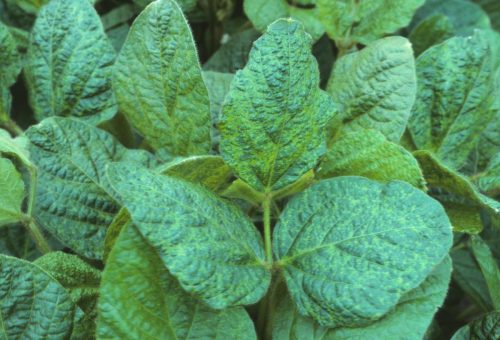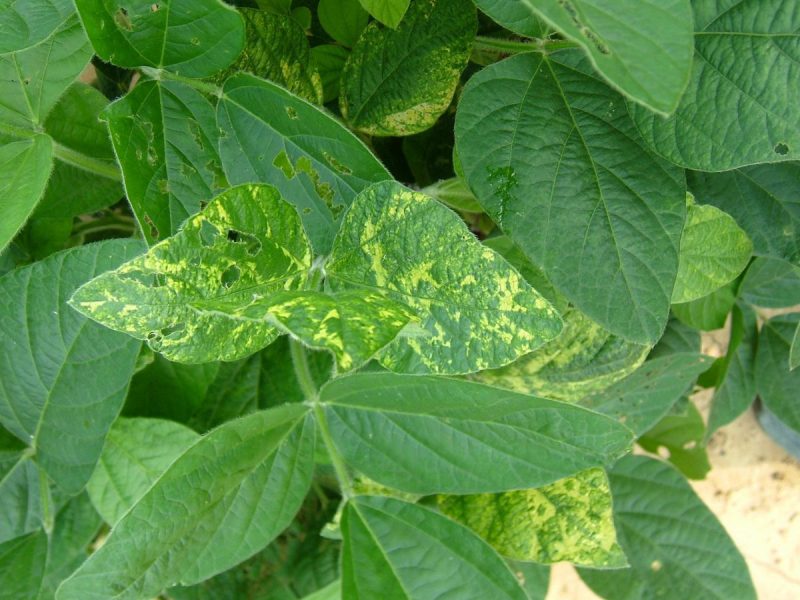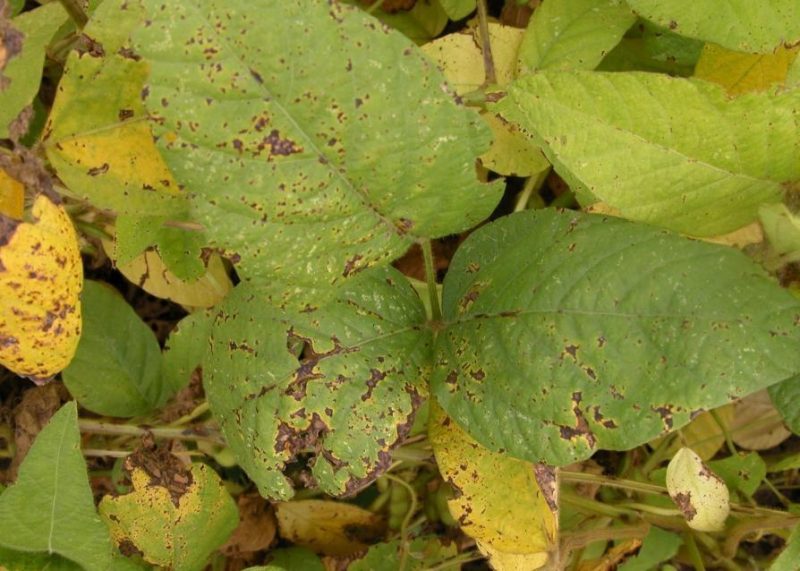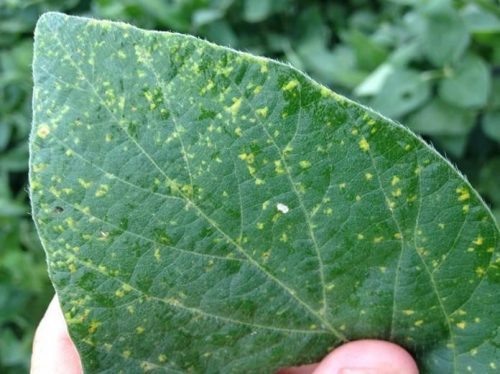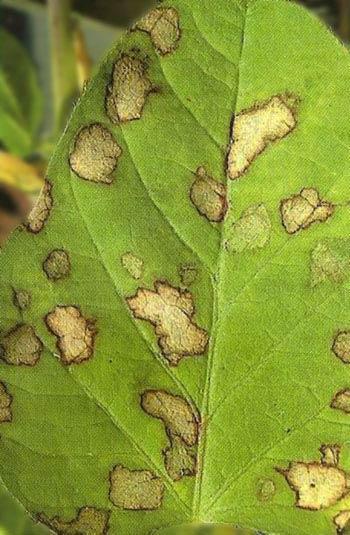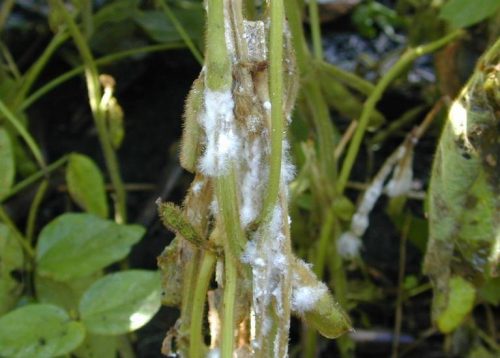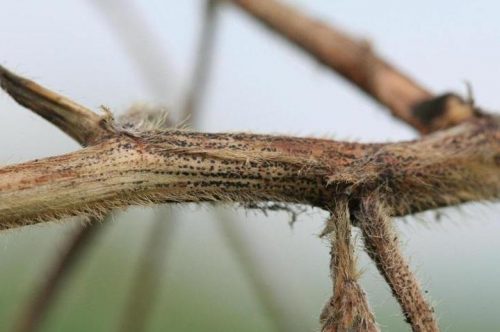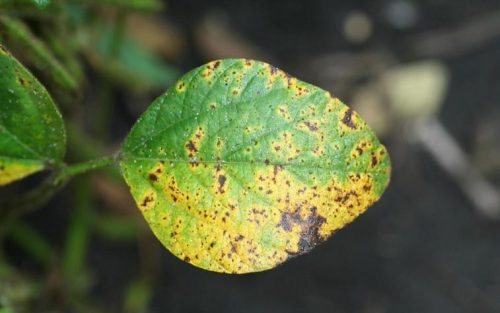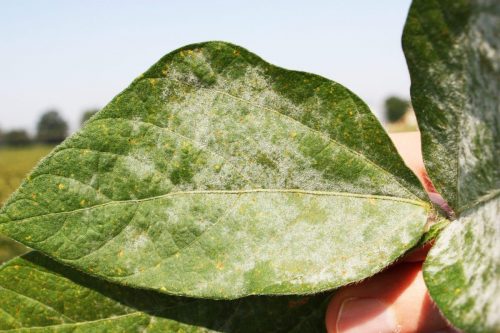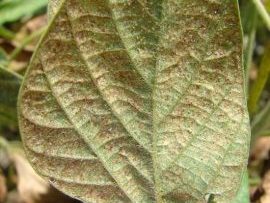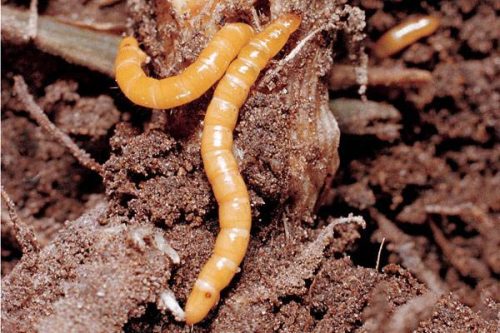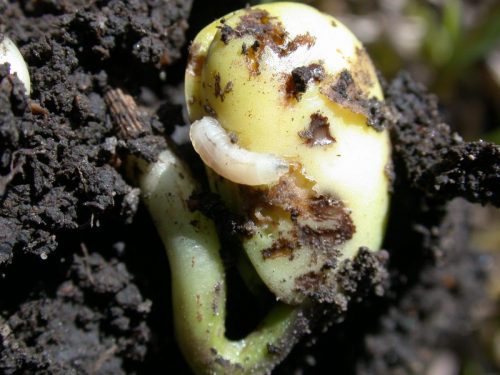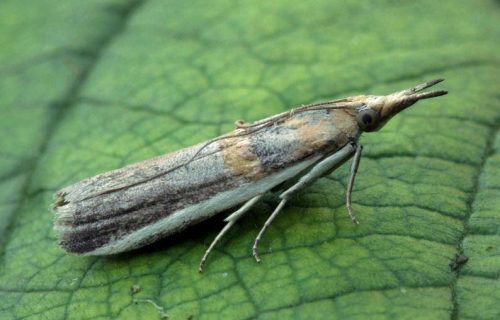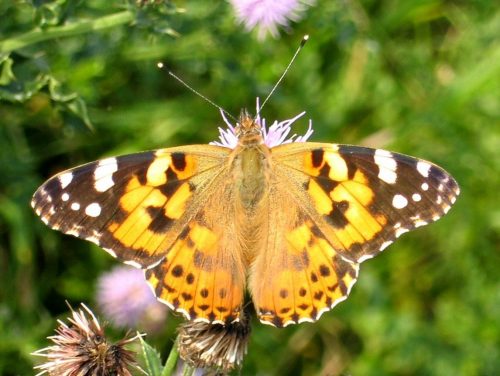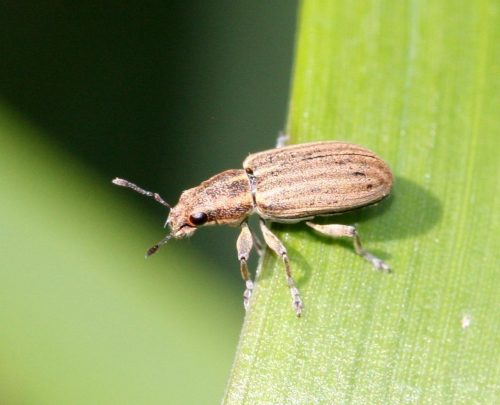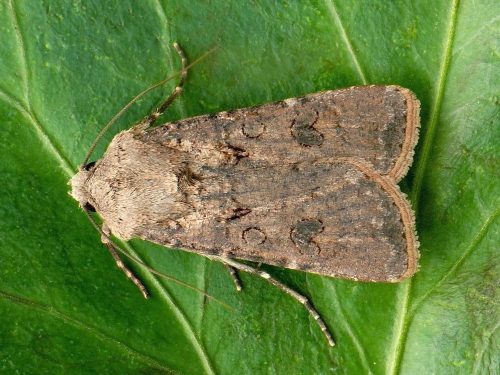Soybean treatments, pest and disease control
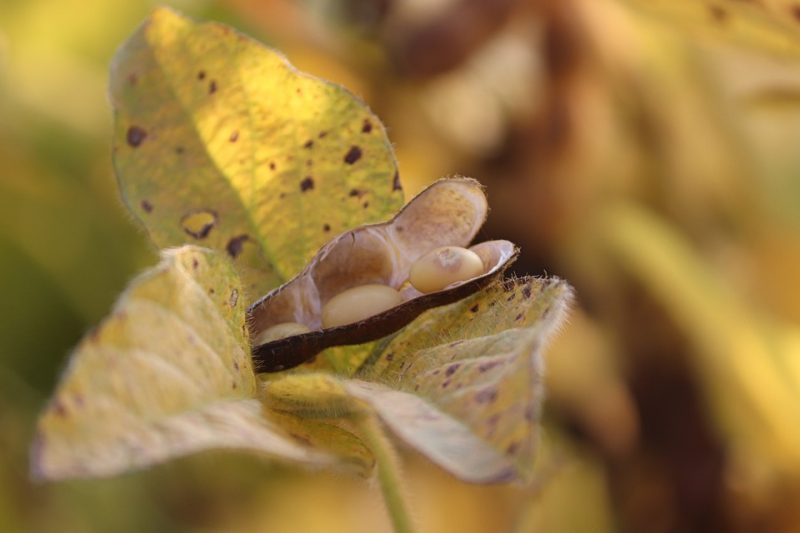
Soybean (Glycine max) is a very popular cultivated plant that belongs to the Fabaceae family. The popularity of this crop is due to the high protein content of the seeds (up to 40%). Soybean originates from Asia and is one of the most nutritious crops. After processing, it becomes food that is easy to assimilate, it is nourishing and has an energizing and remineralizing effect. The cultivation technology of this plant still has some undiscovered secrets. It is also a rather pretentious plant, needing high humidity in the soil, especially when sowing. Also, the fight against diseases and pests is an important stage in crop technology. In order to maintain a healthy culture, it is advisable to correctly identify the problems that may occur.
The main diseases of soybean
Soybean mosaic virus
The attack manifests through the appearance of some discoloration spots on the leaves. The attacked tissues turn yellow and no longer develop normally, and the leaf wrinkles and have a mosaic appearance. Plants from infected seeds develop poorly and form a small number of pods that are also small in size. During the vegetative growth period, the disease is transmitted by aphids, and from one year to another, the virus is transmitted through infected seeds.
Prevention and control measures:
- cultivating resistant varieties;
- using healthy seeds;
- applying insecticides to control the aphid population.
Yellow mosaic (Alfalfa mosaic virus)
The ribs become yellow, and yellow spots appear on the foliar limb. The attacked tissues no longer develop normally, the leaf acquires a mosaic appearance, and in some cases the leaves wrinkle.
Prevention and control measures:
- cultivating resistant varieties;
- using healthy seeds;
- removing the attacked plants from the crop.
Bacterial blight of soybean (Pseudomonas syringae pv glycinea)
The disease can attack in all stages of vegetative growth. On the leaves, angular, brownish-black spots appear, that are initially isolated. The disease progresses and the affected tissues break and detach from the plant. Thus, the leaf acquires a sifted appearance. In wet weather, the bacterial exudate appears on the surface of the attacked areas in the form of a yellow mucilaginous mass.
Prevention and control measures:
- cultivating resistant varieties;
- destroying plant remains from the soil surface;
- cultivating healthy seeds from safe sources;
- no maintenance work will be carried out when the plants are wet.
Downy mildew (Peronospora manshurica)
It can damage more than 30% of the soybean crop. The fungus attacks all the aerial organs of the plant. On the top side of the leaves appear yellow angular spots that evolve and turn brown. On the underside, near the spots, a gray fuzz appears. In case of severe infections, the leaves dry out and fall prematurely.
Prevention and control measures:
- a rotation in which the soybean is recultivated to the same field after 3-4 years;
- balanced fertilization;
- destroying the weeds from the crop;
- cultivating resistant varieties;
- carrying out treatments with specific fungicides.
Leaf and pod spot of soya (Ascochyta sojaecola)
The fungus attacks the leaves, stems, and pods. Gray circular spots appear on the leaves, surrounded by a brown border. The attacked tissues dry out and come off the leaf. On the stems, the disease causes the appearance of elongated, brownish-black spots. The attacked pods display lesions with rotten and often cracked tissue.
Prevention and control measures:
- destroying plant remains;
- a proper agrotechnics;
- using healthy seeds;
- cultivating resistant varieties;
- carrying out treatments with specific fungicides.
White mold (Sclerotinia sclerotiorum)
Dark spots with a burnt appearance appear on the roots and at the base of the stem. A thick white felt develops near this tissue. The affected plants dry up suddenly and can be easily uprooted. The leaves and pods are also covered with a whitish mycelium. The attacked seeds do not germinate and transmit the disease.
Prevention and control measures:
- avoiding damp soils;
- a correct crop rotation;
- treating the seeds before sowing with products that do not destroy the nitrogen-fixing bacteria;
- balanced fertilization;
- carrying out treatments during the vegetative growth period with specific fungicides.
Recommended products
-
You can find products on a different store
Change Store -
You can find products on a different store
Change Store -
You can find products on a different store
Change Store -
You can find products on a different store
Change Store -
You can find products on a different store
Change Store -
You can find products on a different store
Change Store -
You can find products on a different store
Change Store -
You can find products on a different store
Change Store -
You can find products on a different store
Change Store -
You can find products on a different store
Change Store -
You can find products on a different store
Change Store -
You can find products on a different store
Change Store -
You can find products on a different store
Change Store -
You can find products on a different store
Change Store -
You can find products on a different store
Change Store -
You can find products on a different store
Change Store -
You can find products on a different store
Change Store -
You can find products on a different store
Change Store -
You can find products on a different store
Change Store -
You can find products on a different store
Change Store -
You can find products on a different store
Change Store -
You can find products on a different store
Change Store -
You can find products on a different store
Change Store -
You can find products on a different store
Change Store
Pod and stem blight of soybean (Diaporthe phaseolorum var. sojae)
The fungus attacks the stems, pods, and seeds, the attack on the leaves being less frequent. The first symptoms appear in the nodes’ area. Brown spots appear in the attacked areas surrounding the stem. The disease evolves, the attacked areas turn white, and on their surface appear black circular formations that represent the fructification of the fungus. The attacked plants wither, and spots appear on the pods. The attacked seeds lose their germination ability.
Prevention and control measures:
- using healthy seeds;
- balanced fertilization;
- carrying out treatments with specific fungicides.
Septoria leaf spot (Septoria glycines)
The symptoms of this disease manifest on all the aerial organs of the plants and in all the phenophases. Yellow spots appear on the leaves, which then turn brown and become surrounded by a black border. The disease evolves, the center of the spots becomes gray, and inside them develop black circular formations that represent the fructification of the fungus. In case of a strong attack, the leaves dry out.
Prevention and control measures:
- using healthy seeds;
- sowing at the optimum time;
- balanced fertilization;
- a correct crop rotation;
- cultivating resistant varieties;
- carrying out treatments with specific fungicides.
Powdery mildew (Microsphaera diffusa)
This disease attacks all the aerial organs of the plant, but the characteristic symptoms manifest on the leaves. The fungus develops white, pasty spots that spread rapidly and cover the leaves on both sides. Towards autumn, the “felt” becomes dusty, and small black dots appear on the surface, which represent the fructification of the mushroom. The strongly attacked leaves turn yellow and dry out.
Prevention and control measures:
- gathering and destroying the plant remains;
- carrying out treatments with specific fungicides.
The main pests of soybean
Mites (Tetranychus spp.)
They produce several generations per year. The females create a specific cloth that surrounds the stem and then begin to lay eggs. The larvae and adults sting and suck the intracellular fluid of the attacked plants. Following the attack, the development of the plant is slowed down.
Control methods:
- carrying out treatments with specific insecticides.
Recommended products
-
You can find products on a different store
Change Store -
You can find products on a different store
Change Store -
You can find products on a different store
Change Store -
You can find products on a different store
Change Store -
You can find products on a different store
Change Store -
You can find products on a different store
Change Store -
You can find products on a different store
Change Store -
You can find products on a different store
Change Store -
You can find products on a different store
Change Store -
You can find products on a different store
Change Store -
You can find products on a different store
Change Store -
You can find products on a different store
Change Store -
You can find products on a different store
Change Store -
You can find products on a different store
Change Store -
You can find products on a different store
Change Store -
You can find products on a different store
Change Store -
You can find products on a different store
Change Store -
You can find products on a different store
Change Store -
You can find products on a different store
Change Store -
You can find products on a different store
Change Store -
You can find products on a different store
Change Store -
You can find products on a different store
Change Store -
You can find products on a different store
Change Store -
You can find products on a different store
Change Store
Wireworms (Agriotes spp.)
These insects are the larvae of click beetles. They overwinter in the soil as larvae of different stages and produce a generation once every 4-5 years. Wireworms are very dangerous because their attack cannot be identified quickly. They consume the root system, and the plant withers and dies.
Control methods:
- deep autumn plowing;
- treating the seeds before sowing;
- a correct crop rotation;
- applying mineral fertilizers, which have a harmful effect on wireworms.
Recommended products
-
You can find products on a different store
Change Store -
You can find products on a different store
Change Store -
You can find products on a different store
Change Store -
You can find products on a different store
Change Store -
You can find products on a different store
Change Store -
You can find products on a different store
Change Store -
You can find products on a different store
Change Store -
You can find products on a different store
Change Store -
You can find products on a different store
Change Store -
You can find products on a different store
Change Store -
You can find products on a different store
Change Store -
You can find products on a different store
Change Store -
You can find products on a different store
Change Store -
You can find products on a different store
Change Store -
You can find products on a different store
Change Store -
You can find products on a different store
Change Store -
You can find products on a different store
Change Store -
You can find products on a different store
Change Store -
You can find products on a different store
Change Store -
You can find products on a different store
Change Store -
You can find products on a different store
Change Store -
You can find products on a different store
Change Store -
You can find products on a different store
Change Store -
You can find products on a different store
Change Store
Bean seed fly (Delia platura)
It is a polyphagous species that attacks almost all cultivated plants. It produces 2-3 generations per year and overwinters as a pupa in the ground. Adults appear in early spring and lay eggs in the soil, near the plants. After hatching, the larvae attack the germinating seeds, in which they dig galleries.
Control methods:
- carrying out treatments with specific insecticides.
Soybean cyst nematode (Heterodera goettingiana)
It produces two generations a year and overwinters in the form of a cyst, where it can remain inactive for a long time. The attacked roots have galls in the form of small nodules. The attacked plants develop poorly or even die.
Control methods:
- avoiding damp soils;
- proper agrotechnics;
- a correct crop rotation.
Pulse pod borer moth (Etiella zinckenella)
It produces two generations per year and overwinters in the larval stage in the surface layer of the soil. The larvae gnaw the seeds from one pod, after which they can migrate to other pods. It is a very dangerous species that can destroy up to 30% of the culture. It causes damage both directly, by consuming the seeds, but also indirectly, through the excrement and secretions that it eliminates on the healthy seeds.
Control methods:
- proper agrotechnics;
- a correct crop rotation;
- carrying out treatments with specific insecticides.
Painted lady (Vanessa cardui)
It is a polyphagous species. This pest occurs mainly in temperate areas. Adults fly during rainy weather, and the larvae grow rapidly. Usually, the butterfly produces 3 generations per year. Adults lay their eggs on the top side of the leaves. After hatching, the larvae feed on the leaves, which end up falling on the ground.
Control methods:
- carrying out treatments with specific insecticides.
Pea leaf weevil (Sitona lineatus)
It produces one generation per year and overwinters in the adult stage in the surface layer of the soil or under the plant remains from the surface of the soil. It is an oligophagous species that attacks several leguminous plants. The adults gnaw the leaves of the plants, and the larvae destroy the nodules formed on the root. The attacked plants stagnate and give low yields.
Control methods:
- carrying out treatments with specific insecticides.
Turnip moth (Agrotis segetum)
It is a polyphagous species that produces two generations a year and overwinters in the larval stage in the soil. Adults are not harmful, but the larvae consume the leaves and other aerial parts of the plant. In the last stages of development, they retreat into the soil. Following the attack, the plants have a reduced capacity for photosynthesis, and in severe cases, they lose their leaves.
Control methods:
- a correct crop rotation;
- proper agrotechnics;
- carrying out treatments with specific insecticides.
Recommended products
-
You can find products on a different store
Change Store -
You can find products on a different store
Change Store -
You can find products on a different store
Change Store -
You can find products on a different store
Change Store -
You can find products on a different store
Change Store -
You can find products on a different store
Change Store -
You can find products on a different store
Change Store -
You can find products on a different store
Change Store -
You can find products on a different store
Change Store -
You can find products on a different store
Change Store -
You can find products on a different store
Change Store -
You can find products on a different store
Change Store -
You can find products on a different store
Change Store -
You can find products on a different store
Change Store -
You can find products on a different store
Change Store -
You can find products on a different store
Change Store -
You can find products on a different store
Change Store -
You can find products on a different store
Change Store -
You can find products on a different store
Change Store -
You can find products on a different store
Change Store -
You can find products on a different store
Change Store -
You can find products on a different store
Change Store -
You can find products on a different store
Change Store -
You can find products on a different store
Change Store














































































































































































































































































































































































































































